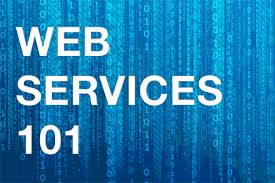 21.What is the purpose of Service Transport layer in Web Service Protocol Stack?
21.What is the purpose of Service Transport layer in Web Service Protocol Stack?
This layer is responsible for transporting messages between applications. Currently, this layer includes Hyper Text Transport Protocol (HTTP), Simple Mail Transfer Protocol (SMTP), File Transfer Protocol (FTP), and newer protocols such as Blocks Extensible Exchange Protocol (BEEP).
22.What is the purpose of XML Messaging layer in Web Service Protocol Stack?
This layer is responsible for encoding messages in a common XML format so that messages can be understood at either end. Currently, this layer includes XML-RPC and SOAP.
23.What is the purpose of Service Description layer in Web Service Protocol Stack?
A. This layer is responsible for describing the public interface to a specific web service. Currently, service description is handled via the Web Service Description Language (WSDL).
24.What is the purpose of Service Discovery layer in Web Service Protocol Stack?
This layer is responsible for centralizing services into a common registry and providing easy publish/find functionality. Currently, service discovery is handled via Universal Description, Discovery, and Integration (UDDI).
25.What HTTP stands for?
HTTP stands for Hyper Text Transfer Protocol.
26.What is HTTP?
Currently, HTTP is the most popular option for service transport. HTTP is simple, stable, and widely deployed. Furthermore, most firewalls allow HTTP traffic. This allows XML-RPC or SOAP messages to masquerade as HTTP messages.
27.What BEEP stands for?
BEEP stands for Blocks Extensible Exchange Protocol.
28.What is BEEP?
This is a promising alternative to HTTP. BEEP is a new Internet Engineering Task Force (IETF) framework for building new protocols. BEEP is layered directly on TCP and includes a number of built-in features, including an initial handshake protocol, authentication, security, and error handling. Using BEEP, one can create new protocols for a variety of applications, including instant messaging, file transfer, content syndication, and network management.
29.What is XML-RPC?
XML-RPC is a simple protocol that uses XML messages to perform RPCs.
30.How request is sent in XML-RPC?
Requests are encoded in XML and sent via HTTP POST.